Yorkshire photographer Jude Palmer captures Covid engineering heroes (and one of their mothers) on camera
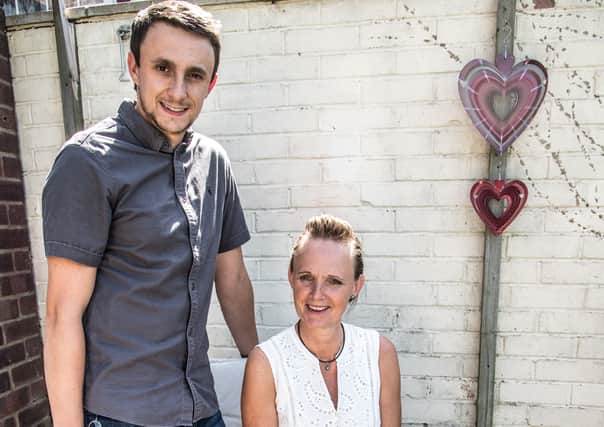

Jude Palmer had been planning on spending her 2020 photographing the athletes of Team GB at the Tokyo Olympics and rock stars at Glastonbury. But the unexpected intervention of Covid this year led her instead to capturing a very different set of heroes on camera.
Instead of her usual work with sportspeople and musicians – Palmer has worked with everyone from the All Blacks rugby team to Ronnie Wood – the Harrogate-based photographer travelled the length and breadth of the country to profile the engineers who dropped everything to fight the Covid-19 pandemic and came up with a vast array of innovations and inventions against the clock.
Advertisement
Hide AdAdvertisement
Hide AdHer subjects included the team that brought together experts from aerospace, medicine and Formula 1 to build more than 13,000 ventilators for the NHS to the mechanical engineer who in his spare time invented a simple hook for opening doors without touching them initially to help protect his mother who was working on Covid wards in Essex that went on to be mass-produced for thousands of frontline hospital workers.
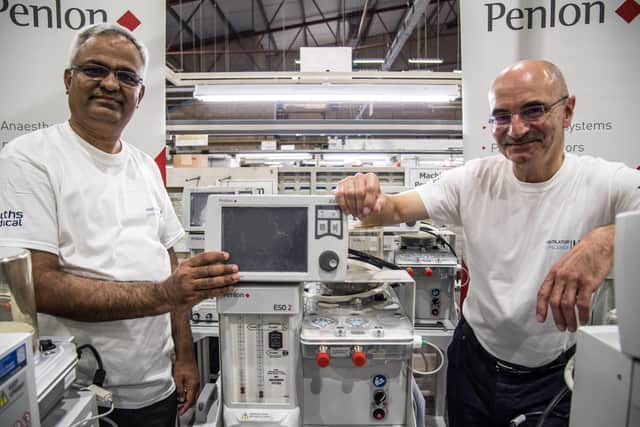

The results of Palmer’s work now form the basis of a new online exhibition called It’s What Engineers Do hosted on the website of Bradford’s National Science and Media Museum.
She says the title is a reflection of the unassuming nature of the people she met during a whirlwind three-and-a-half week shoot around the country.
“The commitment these people put in was amazing,” she says. “They put in the hours but they came up with the answers really quickly. All the engineers I met were all very calm, really nice people who just wanted to use their skills and talents to solve these problems. I left every single shoot feeling so humbled by what I had seen, it was incredible.”
Advertisement
Hide AdAdvertisement
Hide AdPalmer’s involvement in the project came about as she had been in contact with the Royal Academy of Engineering over a potential project with Lewis Hamilton about diversity in Formula 1. The Academy commissioned her to photograph with the winners of the organisation’s President’s Special Awards for Pandemic Service Awards.
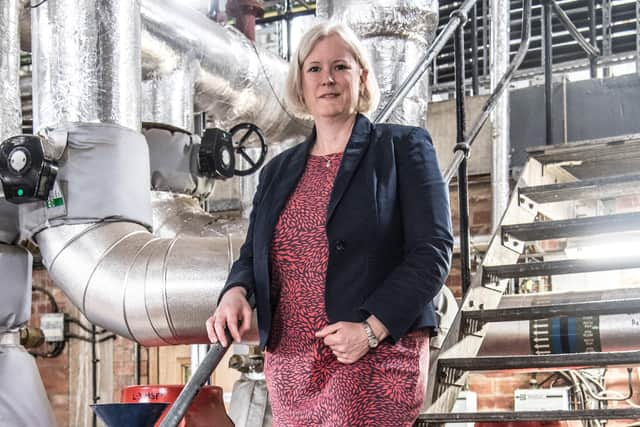

“It all happened very quickly because they announced the awards at the beginning of November,” Palmer explains. “I had around three-and-a-half weeks to get 19 shoots done all across the country. I went down to Plymouth and right up to the North-East, travelling the length and breadth of the country. Logistically it was a bit of a nightmare. Sometimes the same shoot would need me to go to four or five different places. But I wanted to really get to the story. If there was one more person I needed to photograph because they were important to a particular project, I would get them in the shoot.”
Among those she photographed were members of the Ventilator Challenge UK Consortium, led by a man called Dick Elsy.
The 33-strong consortium – involving companies such as Ford, Airbus, McLaren and Rolls-Royce – pulled together to rapidly develop and produce thousands of ventilators to help seriously-ill patients at the start of the pandemic when it was feared the country would not have enough of the machines to go around. Their work more than doubled the NHS’s supplies in a matter of weeks.
Advertisement
Hide AdAdvertisement
Hide AdPalmer says: “In March, we didn’t really understand what Covid was. At the time we just didn’t have any idea and people were thinking, ‘is this the Black Plague?’
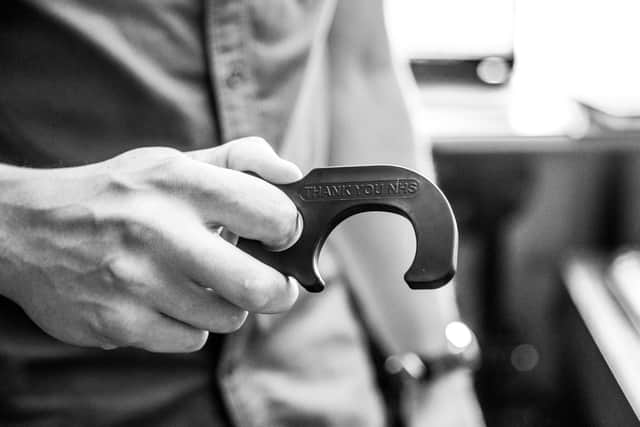

“The passion and commitment was a real eye-opener. There was one guy who was involved with the ventilator challenge – the Government needed them very, very quickly, the basically needed things to have happened yesterday.
“This guy and his team had stayed working until 4am, he walked home through the empty streets of London thinking ‘wow, we have got to come up with something that can literally save lives’. He was back at work the next day at 8am – they all were. That was a really important part to get across.”
At the other end of the scale from the experts employed by giant corporations joining forces for such a massive project was Elliot Dervish, the creator of the ‘Handy Hook’.
Advertisement
Hide AdAdvertisement
Hide AdDervish designed and made the hook to help his mother to prevent her making unnecessary contact with surfaces while dealing with patients in Basildon Hospital in Essex. He made the first Handy Hooks using a personal 3D printer and offered them to NHS workers free of charge via social media. Two colleagues who also had personal 3D printers and material they were happy to donate – Matt Benson and Jonathan Parker – then helped him print 400 hooks in two days. Following a crowd-funding campaign, more than 8,000 of the hooks have ended up being donated to NHS and care home workers.
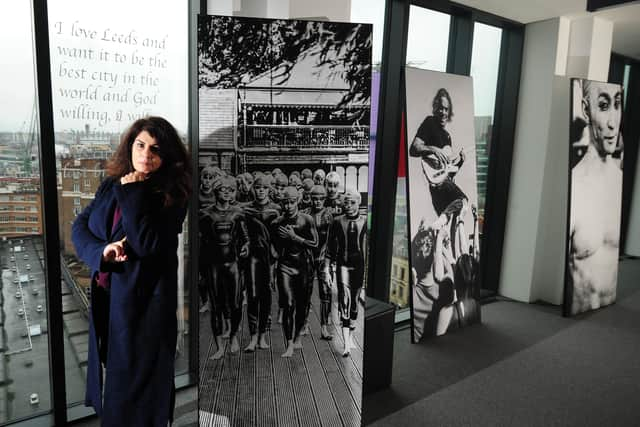

Palmer says: “Elliot was just a young lad who had this idea and he was basically trying to do this for his mother who was a healthcare worker and was worried about having to open doors. He said other people had also made similar things and charged £10 or £12 for them but for him it was never about money.”
When Palmer heard the story from him of how his invention had come about, she asked if they could go and see his mother to do a picture with her and it is one of the photographs featured in the exhibition.
“I always go the extra mile, it makes the difference. There is so much luck to photojournalism and being in the right place at the right time. But you have to be able to improvise in the moment. When I heard what his inspiration was, I knew I needed that to be part of the story.”
Advertisement
Hide AdAdvertisement
Hide AdAmong the other engineers she photographed for the project were a team in Cambridge making a new type of high-performance ventilator to treat patients in low and middle-income countries; designers of an environmentally-friendly face shield in Plymouth and Professor Cath Noakes, from the University of Leeds – a member of Scientific Advisory Group for Emergencies (Sage) who has helped develop guidance on ventilating buildings to reduce Covid risks to workers.
Palmer’s career has involved, among many other things, being the official behind-the-scenes photographer when the Tour de France came to Yorkshire in 2014. She says while this project is very different to her normal work, it is one that has left a lasting impression.
“My skill is really about storytelling. It about getting to the DNA of something and the essence of something. For this particular project, you needed to know what they had achieved. I had no idea about the different types of engineer there were. My image was of mechanical engineering but through this I found out about things like biomedical engineering where someone is taking a piece of lung and transplanting to another part of the body.
“I felt incredibly honoured to be in the presence of some of these people doing things with impact on a global level. Covering the Tour de France is something I will never forget, shooting people like Ronnie Wood is great, but this is something that was affecting the world and these are a group of people who were literally saving lives with the work they are doing. You feel part of human history.
Advertisement
Hide AdAdvertisement
Hide Ad“Part of doing this was to put them in focus because they just get on with their work and are very modest people. For me, it was a great thing I was able to really showcase the people behind these achievements.
“I feel really grateful that the Academy put their trust in me to show these people’s stories and do them justice.”
Museum thrilled to host exhibition
The National Science and Media Museum in Bradford says it is honoured to host the online exhibition.
Charlotte Howard, interpretation developer at the museum, says: “Covid-19 has been a shock to the system. While many of us tucked ourselves away in our homes during the first lockdown, engineers all over the country rolled up their sleeves and got to work. These photographs give us a glimpse into their working lives and the people behind the inventions. The achievements of the 19 awardees are inspiring and the museum is honoured to offer itself up as a platform to share these outstanding achievements.”
Advertisement
Hide AdAdvertisement
Hide AdProfessor Sir Jim McDonald FREng FRSE, President of the Royal Academy of Engineering, adds: “The Covid-19 pandemic is the biggest public health crisis of our time and has presented society with multiple challenges. Engineering expertise and innovation has been central to the global fight to save lives and protect livelihoods.
“I am also incredibly proud of engineers everywhere who have worked round the clock to maintain essential services, critical supply chains and infrastructure in unprecedented circumstances, using their training and skills to find innovative solutions to a host of problems and to help mitigate the impact of COVID-19 on our daily lives.”
To view the exhibition, visit www.scienceandmediamuseum.org.uk/whats-on/engineering-response-covid-19.
Support The Yorkshire Post and become a subscriber today. Your subscription will help us to continue to bring quality news to the people of Yorkshire. In return, you’ll see fewer ads on site, get free access to our app and receive exclusive members-only offers. Click here to subscribe.
Comment Guidelines
National World encourages reader discussion on our stories. User feedback, insights and back-and-forth exchanges add a rich layer of context to reporting. Please review our Community Guidelines before commenting.